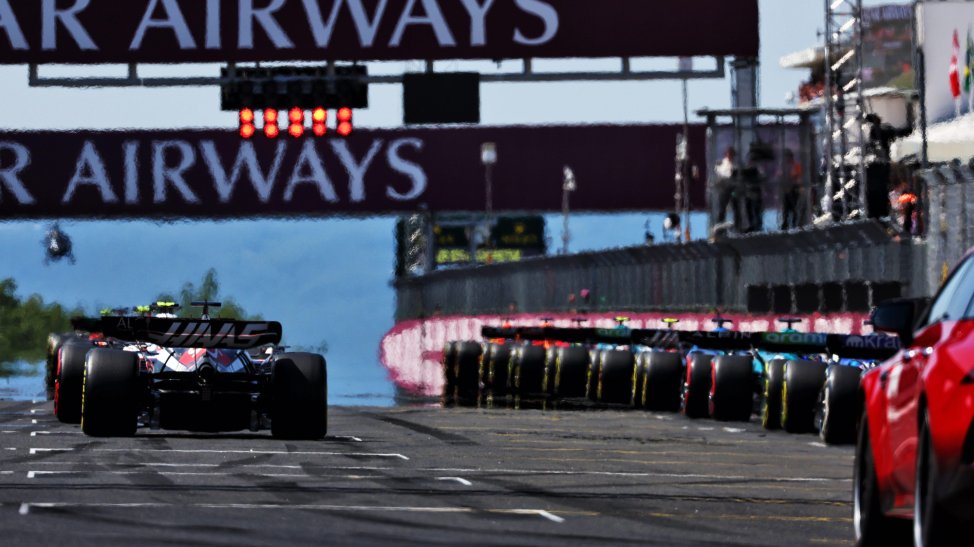In 2026, Formula 1 power units will undergo the biggest change since the old V8s were dumped in favour of the 1.6L V6 turbo hybrids ahead of the 2014 season.
The rough idea was that to make Grand Prix racing an enticing prospect to road car manufacturers, F1 had to go hybrid to remain relevant.
Cosworth declined to participate in the new rules, meaning Mercedes, Ferrari and Renault were the three suppliers for the first race in Australia - with only Honda taking the plunge to join since in 2015 before leaving again at the end of 2021, only to realise its mistake as Red Bull dominated and quietly increase its visibility once again.
The turbo hybrids are extremely complex with a single power unit consisting of an Internal Combustion Engine, Turbo Charger, MGU-H, MGU-K, control electronics and the energy store but for 2026, major changes are coming to the units, the first real ones since their adoption a decade ago.
RacingNews365 takes a look at the changes coming for 2026 to the power units below - and who is signed up to take part.
Viewed by others:
Three times as much electrical power
For 2026, there is set to be a far greater emphasis on the capturing and deployment of electrical energy which drivers can use to defend or attack.
At present, the MGU-K is capable of producing an output of 120kw but with the beefed-up systems for 2026, the aim is for 350kw to be produced - almost trebling the current amount of energy a driver has at their disposal.
Reduction in fuel used
In 2014, the limit of fuel available to a driver at the start of a race was 100kg, itself a reduction on the 160kg onboard in the V8 era after refuelling was banned for 2010.
But for 2026, the aim, with a higher share of electrical energy, is to further reduce the fuel used in Grands Prix to around the 70kg mark. That is like having a George Russell or Lance Stroll in the car in terms of fuel at the start.
The power units will still be chucking out over 1,000 brake-horse power.
Eco fuels are the way forward
As part of F1's push to meet the net zero carbon status by 2030, the fuels used in the cars are set to become fully sustainable.
That process has already begun with cars already using E10 fuel, which is a mix of 90% fuel and 10% renewable ethanol.
The idea is to use carbon from non-food, waste and even that which is already in the atmosphere.
Article continues below.
Who is signed up for the 2026 F1 power unit regulations?
The new power unit rules for 2026 are going to be coupled with an overhaul of the cars themselves.
FIA single-seater boss Nikolas Tombazis has described the plan for 'nimble' cars will include the wheelbase being narrowed from 3600mm (3.6m) to 3400mm (3.4m), with the track also narrowed from 2000mm (2m) wide to 1900mm (1.9mm).
The final scope of the car regulations will be revealed by the FIA at the end of June this year, which gives the teams 18 months to design the best machines - although no work may be carried out until January 1st, 2025.
As for the power unit suppliers signed up for 2026, F1 has managed to entice two new participants - and if Andretti gets its way and joins the grid, a third will also be added, but not before 2028.
The full list is in the table below.
Power unit suppliers for 2026 F1 regulations
| Power unit supplier | Confirmed teams | Possible teams |
|---|---|---|
| Alpine Racing | Alpine | Andretti (if accepted between 2026-27) |
| Audi | Stake (will become Audi for 2026) | |
| Ferrari S.p.A. | Ferrari | Haas |
| Honda Racing Corporation | Aston Martin | |
| Mercedes-AMG High Performance Powertrains Ltd. | Mercedes, McLaren, Williams | |
| Red Bull Powertrains - Ford | Red Bull, AlphaTauri | |
| General Motors/Cadillac - if Andretti's entry bid is accepted by F1. | Andretti - not before 2028 |
Don't miss out on any of the Formula 1 action thanks to this handy 2026 F1 calendar that can be easily loaded into your smartphone or PC.
Download the calenderMost read
In this article












Join the conversation!